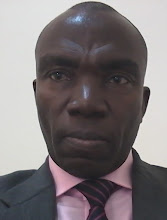By Jossy Muhangi
Uganda-Travel-feature
Across
APA-Kampala( Uganda )When the Inter Region Economic Network (IREN) Kenya selected me to attend its seventh African Resource Bank (ARB) meeting in early November,2009, to be held in Arusha , Tanzania , two prospects excited me.
One was the likelihood of a flight aboard a Kenya airways Boeing (Africa’s pride), through the ultra modern Jommo Kenyatta International Airport en-route to Kilimanjaro airport (KIA).My target was to have a clear aerial view of the snow capped Kilimanjaro mountain popularly know as the “Roof of Africa” although others call it the summit of the Black continent, being the highest in Africa at 19,341 ft .
The other prospect was of course which personalities in the academia, civil society, governance and the media. Being a resource bank meeting, I did not expect to withdraw or deposit cash there since the convener had clarified that the bank was a forum where different scholars and thinkers deposit and withdraw ideas on relevant themes affecting
Contrary to my travel expectations, the events manager wrote in bold fonts in the last paragraph that the participants were expected to find their way to the venue of the event which was Kibo Palace Hotel, a plush state of the art resort centre along Old Moshi road in the centre of Arusha town.The organizers with the support from Friedrich Norman Foundation would cater for accommodation, meals and conference materials
Unable and hesitant to raise the 300 US dollars for the return ticket as well as the cabin costs for the connection between the airport and Arusha town, I opted for the road transport.
My search on the internet indicated that there were several bus companies including the Scandinavian Express, Akamba Public Transport Company, Starways, Kampala Coach, BusCar ,Dar Express and Gateway among others.
Scrolling through the fares ,I was misled by the attractive fares offered by Akamba whose brand slogan is “Connecting East Africa”, little knowing that the rates had not been updated on the bus company website. I was later to be shocked to my nerves when I learnt that the rates had since more than doubled while the info on the website remained obsolete.
Anyhow, I was told I would spend not less than 18 hours on the road or in transit including the time spent at the two borders clearing the travel documents and connecting from a Kampala-Nairobi bound coach to he one heading for
We set off at 3.pm through the hustle of
So considerate are the long route bus companies that they provide meal coupons for all the passengers for light snacks once in
The Immigration hitch and border conmen
Since the East African countries are still using different national currencies and its is still optional either to use a national passport or the East African one, money changers are doing brisk business at the border points .By the time a rare traveler comprehends the exchange rates ,some with decimal points, some have already fallen victims of fake notes, poor calculations to the benefit of the money changer while others are conned by smart looking conmen who extort money from them purportedly for the passport stamp or visa. Formally, there is no visa requirement or any other charges for travelers within East African community states.
My hard luck struck when I discovered that the 12 year old boy I had been traveling with to visit our relatives in Arusha, had his travel document indicating he had been granted permission to visit
A Kenyan Immigration officer took advantage of this omission to ask me in Kiswahili “Olimupeleka wapi” meaning where are you taking the boy. On telling him he was visiting Arusha,he insisted the travel document never indicated so. Though I argued the travel document was valid in any part of East African community, the mean looking officer ,ignored me until the queue was cleared and he openly asked me for 10,000 Tanzanian shillings to correct the anomaly which I had to part with reluctantly lest the bus rushing to Dar,500 kilometers away would leave us stranded at the border.
I also discovered that a number of my friends lost cash to the money changers while others were conned into paying more for the stamp which is free of charge.
Language barrier
While it was okay for the meeting participants to freely exchange in English, there were major problems particularly for Ugandan visitors and participants to freely communicate with the hotel staff and the rest of the community in Arusha. The commonest language is Kiswahili which in Uganda is a preserve of few people mostly the armed forces although the Kenyans had less problems getting on well with their Tanzanian neighbours .No wonder that some of us would at times use sign language to ask for certain services from the hotel staff and the business community in the chilly Arusha town which lies on the foot of Mount Meru and not far from Kilimanjaro ranges.
However, Tanzanians being one of the most hospitable communities in
Arusha is the home to the East Africa Community headquarters currently housed at the Arusha International Conference Centre (AICC) along the
It has become an international diplomatic town with most of the peace talks and deals between warring countries negotiated here , as well as a tourist hub surrounded by several national parks including the famous
end

